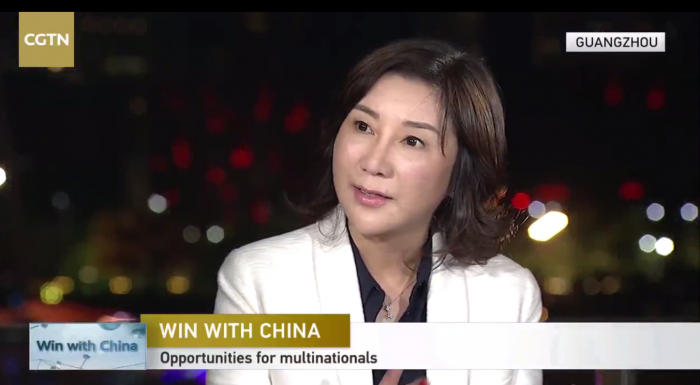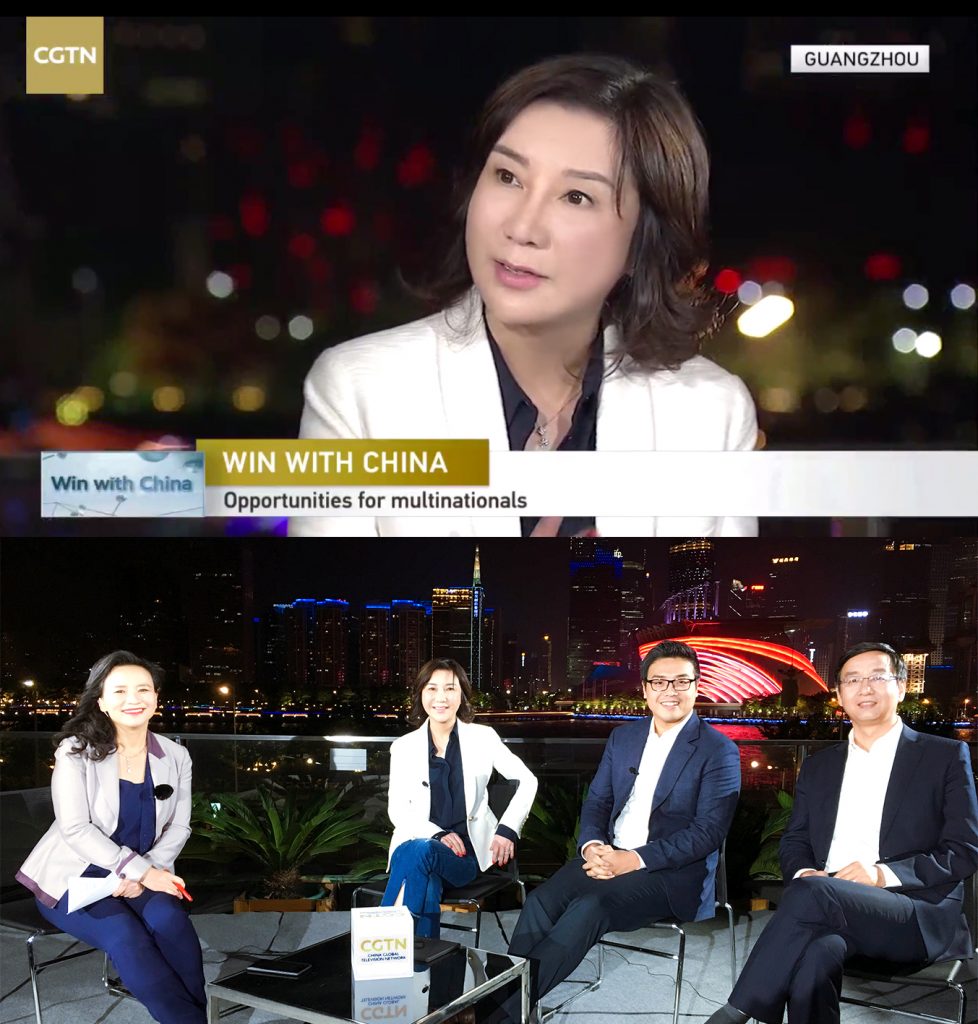
2017年12月11日
CSOFT CEO, Shunee Yee, sat down with CGTN for a live panel discussion last Friday, December 8th, as the 2018 Fortune Global Forum drew to a close. Interviewed by CGTN’s Cheng Lei, Yee was joined by WME/IMG China’s chairman, Michael Ma, and Paulson Institute’s Beijing managing director, Kevin Mo, to discuss how to “win with China” as China’s companies continue to push forward in its global ambitions.
As the final installment in CGTN’s special series about “Global Business in Guangzhou” covering the 2018 Fortune Global Forum, the three panelists discussed three major points – where the opportunities are for multinationals working with China, what the best way of globalizing is, and how China and its companies can better engage with the global community.
Opportunities for multinationals
According to Yee, the next biggest opportunity for many multinationals is actually taking on how to bring the East to the West. Contrast to 30 years ago when multinationals only started to come to China in search for OEM partners, today, there is an explosion of quality content and innovation rooted in China itself. As Apple’s CEO, Tim Cook, mentioned in the forum’s opening, Apple’s presence in China is more than just manufacturing – it’s also about the talent and innovation that comes out of China.
With the growth in innovation, comes more opportunities for Chinese and multinational companies alike. When CSOFT opened its doors almost 14 years ago, the client base consisted purely of Fortune 500 companies from outside of China looking to localize in a few dozen languages. Today, CSOFT serves more than 130 major Chinese brands from all different industries and localizes in over 100 languages. This just shows how quickly China is catching up in the global economy as it has transformed over the years from follower to leader across various industries.

Strategies for good cultural integration
As China rises and steps ahead in innovation, a successful global presence requires more than just translating technology across borders. Yee states that ultimately, the goal is to connect to the audience. Every detail must be considered for the target audience so that products and services resonate with local markets, even down to the language a corporation runs in. Although Yee believes the language a company operates in is a personal choice, it still poses as a branding strategy, so choosing the right language to cross borders and communicate with your customers is critical.
Looking at China’s globalization progress, there are many top brands that recognize the importance of localization and its process. They realize that translated products are not enough and need to reflect local cultures, habits, and perspectives. Companies like Huawei, Midea, and Alibaba, are investing in more than just translation. Huawei heavily focuses on the usability of its products so that it caters to all its customers around the world in more ways than just a translated user manual.
How to engage the right way
Even with China’s heavy investment in R&D, brilliant technology is not enough. Yee believes that the next biggest challenge for Chinese companies going global is getting the “soft power” right. Engaging with the global audience effectively requires a soft power that comes
from language and culture, rather than research and development. Many of China’s companies have been founded by people with engineering backgrounds, which yields high-quality products, but not enough engagement with its customers. Often Chinese companies lack a good storyteller to appeal to and understand each audience. By truly understanding local perspectives, the true story and experience of a product gets told, even if it requires detailed changes to fit different countries. Often times, this requires the CEO of a brand to have a global mindset in the beginning. Through the Shenzhen 100 report commissioned by the Shenzhen government, CSOFT identifies “risers” as young entrepreneurs who held a global perspective from day one, often resulting in a more successful globalization strategy.
As the interview drew to a close, Yee concluded that the best way for the world to engage with China and vice versa, is through openness and innovation.
For the full interview, watch here.
